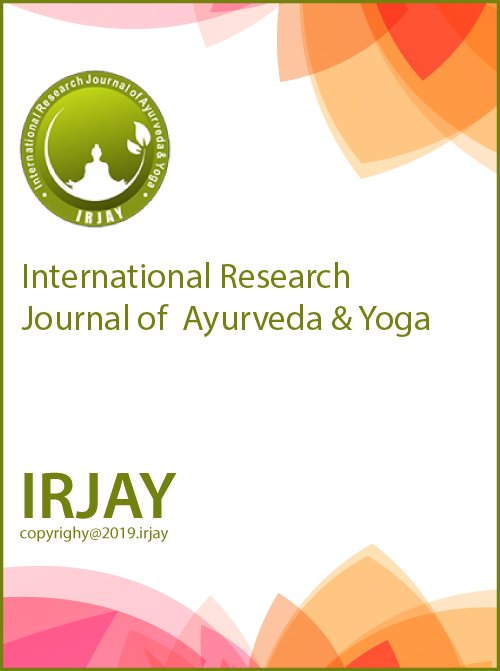A Study to Evaluate the Association of Varna in Healthy Individuals of Different Deha prakriti– An Observational Study
DOI:
https://doi.org/10.48165/IRJAY.2024.70404Keywords:
Beauty, Prakriti, Skin Color Index, Skin Complexion, VarnaAbstract
Humans are given beauty as a heavenly gift. Throughout the beginning of time, its significance has been understood and valued, and attempts have been made to conserve and advance beauty in all of its forms. Some of the factors outlined in Ayurveda that play an important part in determining a person’s attractiveness include: (a) Prakriti, (b) Sara, (c) Samhanana, (d) Varna, (e) Prabha, and (f) Chhaya. These factors provide the aesthetic sense and essential basis of personality and beauty. Ayurvedic literature classifies seven types of Prakriti1 and characterized the skin color (Varna) on basis of Prakriti. There are many characters mentioned in Samhita for determination of Prakriti. Skin (Twacha) is one of criteria among them. This study has been undertaken to determine the association of prakriti and Varna.
Downloads
References
Shastri AD, editor. Commentary Ayurveda Tattva Sandipika of Ambikadutta Shastri on Sushruta Samhita, Sharira Sthana; Garbhav Yakarana Sharira Adhyaya. 1st ed., Ch. 4., Verse 61. Varanasi: Chaukhamba Sanskrit Sansthan; 2011. p. 49.
Cheriya V, editor. Commentary Shashilekha of Indu on Astangh Hridaya of Vagbhata, Sharira Sthana; Angavibhag. 1st ed., Ch. 6., Verse
-89. Varanasi: Chowkhamba Krishnadas Academy; 2007. p. 192-3. 3. Shastri R, editor. Commentary Vidyotini of Kasinatha Sastri and Gorakha Natha Chaturvedi on Charak Samhita, Indriya Sthana; Varnaswariyam Indriyam Adhyaya. 1st ed., Ch. 1., Verse 8. Varanasi: Chaukhamba Sanskrit Sansthan; 2006. p. 970.
Shastri R, editor. Commentary Vidyotini of Kasinatha Sastri and Gorakha Natha Chaturvedi on Charak Samhita, Sharira Sthana; Khuddika Garbhavakranti Adhyaya. 1st ed., Ch. 3., Verse 11. Varanasi: Chaukhamba Sanskrit Sansthan; 2006. p. 859.
Camacho S, Ruppel A. Is the calorie concept a real solution to the obesity epidemic? Glob Health Action 2017;10:1289650. 6. Hill JO, Wyatt HR, Peters JC. Energy balance and obesity. Circulation 2012;126:126-32.
Charaka Samhita, Vimana Sthana, Rogabhisakajitiya Vimana, 8/97. Available from: https://niimh.nic.in/ebooks/ecaraka [Last accessed on 2023 Dec 20].
Charaka Samhita, Vimana Sthana, Rogabhisakajitiya Vimana, 8/96. Available from: https://niimh.nic.in/ebooks/ecaraka [Last accessed on 2023 Dec 20].
Astanga Hridya, Sharira Sthana, Angavibhaga Sharira, 3/10. Available from: https://vedotpatti.in/samhita/vag/ehrudayam [Last accessed on 2023 Dec 20].
Perrett DI, Talamas SN, Cairns P, Henderson AJ. Skin color cues to human health: Carotenoids, aerobic fitness, and body fat. Front Psychol 2020;11:392.
Cichorek M, Wachulska M, Stasiewicz A, Tymińska A. Skin melanocytes: Biology and development. Postepy Dermatol Alergol 2013;30:30-41.
Brenner M, Hearing VJ. The protective role of melanin against UV damage in human skin. Photochem Photobiol 2008;84:539-49. 13. Al Nasser Y, Jamal Z, Albugeaey M. Carotenemia. In: StatPearls. Treasure Island, FL: StatPearls Publishing; 2023.

